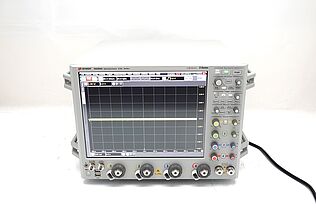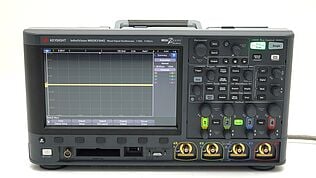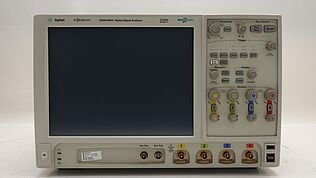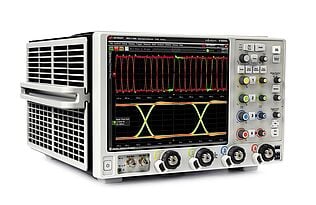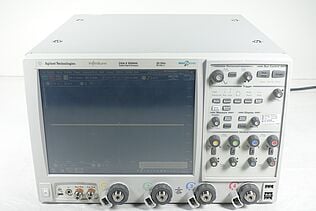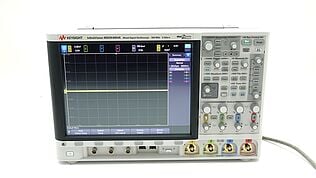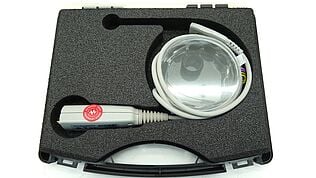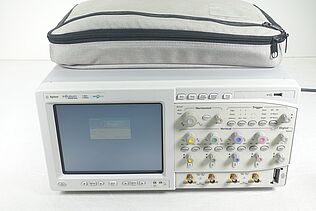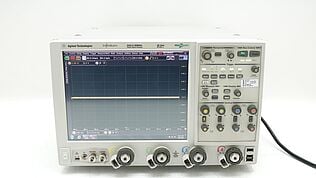- Introduction
- Coupling Capacitor Defined
- How It Works
- Key Characteristics of Coupling Capacitors
- Capacitance Value
- Voltage Rating
- Physical Size
- Applications in Electronic Circuits
- In Amplifiers
- In Signal Processing
- In Oscilloscopes and Testing Equipment
- Common Issues and Troubleshooting
- Capacitance Drift
- Dielectric Absorption
- Physical Damage
- Troubleshooting Steps
- Check Capacitance Value
- Inspect for Physical Damage
- Test in Circuit
- Comparison of Different Types of Coupling Capacitors
- Conclusion
- Whenever You’re Ready, Here Are 5 Ways We Can Help You
此页面暂时不提供中文版本。我们计划在不久的将来提供更多内容并支持中文。
感谢您的投票。Have you ever wondered how electronic circuits manage to transfer signals flawlessly between different stages while blocking unwanted DC noise?
This remarkable feat is primarily achieved through a component known as a coupling capacitor. These capacitors are integral in maintaining the performance and integrity of a wide range of electronic devices.
Coupling Capacitor Defined
At its core, a coupling capacitor is a device designed to connect two circuits. Its primary function is to allow AC signals to pass while blocking DC components. It plays a critical role in various electronic applications, especially in signal processing and amplification circuits.
How It Works
- AC signal transfer: It allows the AC component of a signal to pass from one circuit stage to another.
- DC isolation: It prevents any DC voltages present in one part of the circuit from affecting the next stage.
| Key Takeaway |
| Coupling capacitors are indispensable in ensuring signal integrity and reducing noise in electronic circuits, making a profound impact on the performance and reliability of various electronic devices and systems. |
Browse Our Selection of Premium Used Oscilloscopes
Key Characteristics of Coupling Capacitors
There are several critical characteristics that determine the functionality and suitability of coupling capacitors for a specific application.
Understanding these characteristics is essential for any electrical engineer working with electronic circuits and testing equipment like oscilloscopes.
Capacitance Value
1. High capacitance
- Lower frequency effectiveness: High capacitance capacitors are adept at transmitting lower frequency signals. They act as a more substantial reservoir for charge, allowing smoother passage of these signals.
- Application example: In audio circuits, higher capacitance values are often used to ensure the full range of audio frequencies are transmitted without distortion.
2. Low capacitance
- Suitability for high frequencies: In contrast, lower capacitance values are used in high-frequency applications. This is because they prevent the transmission of lower, often undesired, frequencies, acting as a natural high-pass filter.
- Circuit efficiency: Using low capacitance in high-speed circuits also minimizes energy storage, leading to quicker response times and improved overall circuit efficiency.
Voltage Rating
- Determining adequate rating: The voltage rating of a coupling capacitor is a measure of the maximum voltage it can handle without risk of failure or degradation.
- Safety margin considerations: It's crucial to select a capacitor with a voltage rating higher than the circuit's maximum operating voltage. This safety margin is vital for reliability, especially in circuits subject to voltage spikes or fluctuations.
- Longevity and reliability: Using capacitors with an adequate voltage rating also contributes to the longevity of the component, as it is less likely to suffer from breakdown or deterioration under normal operating conditions.
Physical Size
- Impact on circuit design: The physical size of the capacitor is a significant consideration in circuit design, particularly in compact or densely packed electronic devices.
- Miniaturization trends: With the trend towards miniaturization in electronics, selecting capacitors that offer the required capacitance and voltage rating within a minimal footprint is increasingly important.
- Heat dissipation and layout: Besides just fitting into the circuit, the physical size also influences heat dissipation and layout considerations. Larger capacitors may offer better heat dissipation but could pose challenges in layout design and electromagnetic compatibility (EMC).
Understanding and balancing these characteristics is key to ensuring that the coupling capacitors employed in your circuits are not only effective but also reliable and suited to the specific demands of your applications.
Applications in Electronic Circuits
Coupling capacitors are fundamental components found in a myriad of electronic devices and systems. Their ability to selectively transmit signals makes them indispensable in various applications, especially where signal integrity and noise reduction are paramount.
In Amplifiers
Signal Coupling
- Stage-to-stage connectivity: Coupling capacitors are used to connect different stages of an amplifier, such as linking a pre-amplifier stage to a power amplifier stage.
- AC signal transmission: They ensure that only AC signals pass through, maintaining the amplifier's intended functionality without DC interference.
Noise Reduction
- DC noise elimination: By blocking DC components, these capacitors significantly reduce DC noise, which can otherwise introduce distortions and affect the sound quality in audio amplifiers.
- Stabilization of signal: They help stabilize the signal passing through the amplifier, contributing to a clearer and more reliable output.
In Signal Processing
Filtering
- Formation of high-pass filters: In conjunction with resistors, coupling capacitors can form high-pass filters, essential in applications like audio processing where it's necessary to block low-frequency noise or hum.
- Tuning signal frequencies: They can be used to tune the frequency response of a circuit, allowing specific frequency bands to pass while blocking others.
In Oscilloscopes and Testing Equipment
Signal Measurement
- Accurate signal representation: In oscilloscopes and other testing equipment, coupling capacitors ensure that the measured signal accurately represents the AC component without DC bias, which is crucial for precise diagnostics and analysis.
- Protection of measurement equipment: By blocking high DC voltages, these capacitors also protect sensitive measurement equipment from potential damage.
Enhanced Measurement Capabilities
- Improved bandwidth and response: Properly selected coupling capacitors can enhance the bandwidth and response time of the testing equipment, enabling more accurate and faster measurements.
- Isolation and safety: They provide a degree of electrical isolation between the circuit under test and the measuring equipment, enhancing safety and reducing the risk of electrical interference.
In each of these applications, coupling capacitors are not just passive components; they actively shape and refine the behavior of electronic circuits.
Their role in ensuring signal integrity, reducing noise, and enabling precise measurements is crucial in the design and functionality of modern electronic systems.
Common Issues and Troubleshooting
Even the most robust coupling capacitors can encounter issues that affect their performance in electronic circuits.
Recognizing these problems and knowing how to troubleshoot them is essential for maintaining the functionality and reliability of electronic devices.
Potential problems include capacitance drift, dielectric absorption and physical damage. Let’s analyze these one by one to see how they affect coupling capacitors.
Capacitance Drift
- Cause: Aging or environmental factors like temperature changes can alter the capacitance value over time.
- Effect: This drift can lead to performance issues, as the capacitor may no longer effectively pass the intended frequency range.
Dielectric Absorption
- Cause: This phenomenon occurs when a capacitor retains some charge after discharging, more pronounced in certain dielectric materials.
- Effect: It can lead to signal distortion, particularly in precision circuits where signal integrity is crucial.
Physical Damage
- Cause: Overvoltage, mechanical stress, or excessive heat can cause physical damage to capacitors.
- Effect: This might result in leakage, shorts, or complete failure of the capacitor.
Troubleshooting Steps
Before diving into replacements or major circuit overhauls, it's important to methodically troubleshoot coupling capacitors. This process can often reveal simple fixes that can save time and resources.
Below are some key steps to follow when troubleshooting.
Check Capacitance Value
- Method: Use a capacitance meter to verify if the capacitor still holds its specified value.
- Purpose: This helps to determine if capacitance drift is the cause of circuit issues.
Inspect for Physical Damage
- Visual inspection: Look for signs of bulging, leakage, or burn marks on the capacitor.
- Reason: These physical signs often indicate over-stressing or failure of the capacitor.
Test in Circuit
- Use an oscilloscope: Measure the signal at various points in the circuit before and after the capacitor.
- Goal: This step helps verify if the capacitor is effectively coupling the signal and maintaining signal integrity.
Regular monitoring and maintenance of coupling capacitors can prevent many of these issues. When troubleshooting, it’s essential to approach systematically, understanding that capacitor-related problems can have wide-ranging effects on the overall performance of electronic circuits.
Comparison of Different Types of Coupling Capacitors
| Type of Capacitor | Capacitance Range | Voltage Rating | Physical Size | Ideal Applications | Notable Features |
|---|---|---|---|---|---|
| Ceramic Capacitors | Low to Medium | Low to High | Small to Medium | High-frequency circuits, RF applications | Stable, minimal capacitance drift |
| Electrolytic Capacitors | High | Medium to High | Larger | Power supplies, audio circuits | High capacitance-to-volume ratio |
| Film Capacitors | Medium to High | Low to High | Medium to Large | Audio and signal processing | Low dielectric absorption, good for precision circuits |
| Tantalum Capacitors | Medium | Medium | Small to Medium | Sensitive electronic devices | Stable in wide temperature range |
| Mica Capacitors | Low | High | Small | RF and microwave circuits | High accuracy, low capacitance drift |
Get Refurbished Oscilloscopes On Sale!
最多可以选择3台仪器进行对比
Enable Notifications
In order to use this feature, you need to enable notifications.
Manage notification preferences
Conclusion
Coupling capacitors are essential yet often overlooked components in electronic circuits. The correct selection and proper application of these components ensure the seamless transfer of signals while preserving their purity and integrity.
Remember, the right coupling capacitor can be the difference between a perfectly functioning circuit and one plagued with signal integrity issues.
For professionals and enthusiasts looking to explore the full potential of electronic circuits, the right equipment is key.
Keysight Used Equipment Store offers a comprehensive range of premium used oscilloscopes, spectrum analyzers, waveform generators, and multimeters. These tools are essential for testing, troubleshooting, and perfecting your electronic designs with precision.
Discover high-quality equipment at a fraction of the cost and elevate your engineering projects.

Whenever You’re Ready, Here Are 5 Ways We Can Help You
- Browse our Premium Used Oscilloscopes.
- Call tech support US: +1 800 829-4444
Press #, then 2. Hours: 7 am – 5 pm MT, Mon– Fri - Talk to our sales support team by clicking the icon (bottom right corner) on every offer page
- Create an account to get price alerts and access to exclusive waitlists.
- Talk to your account manager about your specific needs.

